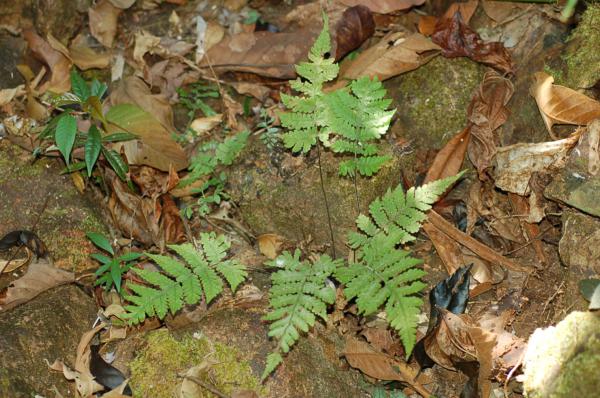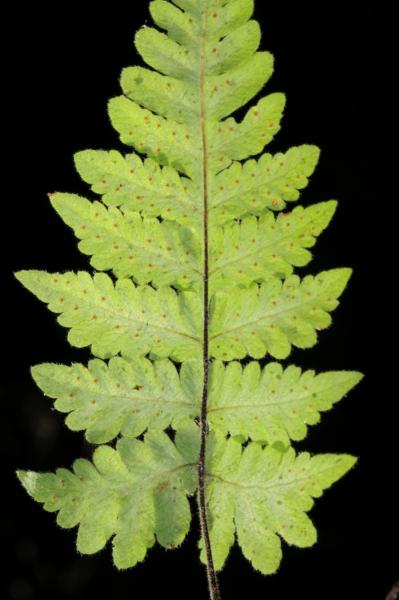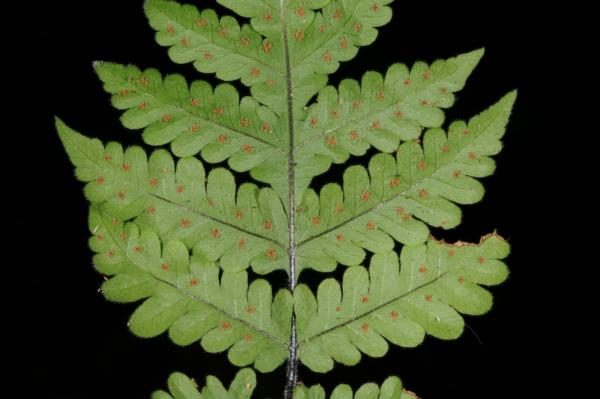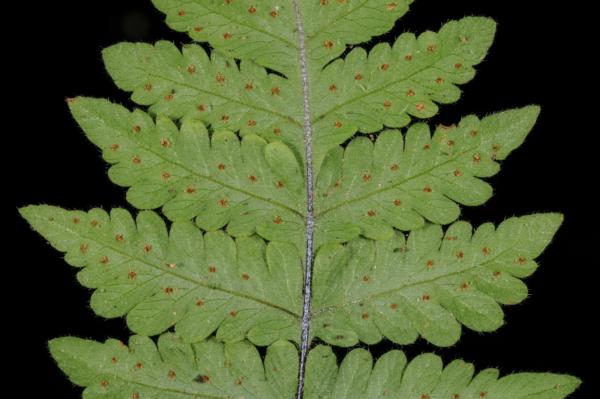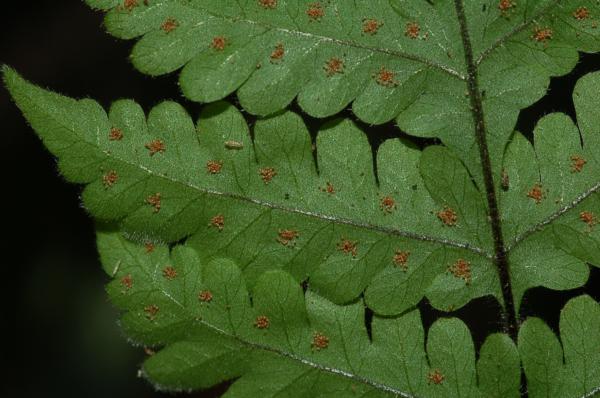
Heterogonium sagenioides (Mett.) Holttum
Family
Tectariaceae
Nomenclature
Heterogonium sagenioides (Mett.) Holttum, Sarawak Mus. J. 5: 161. 1941; Holttum, Rev. Fl. Malaya ed. 1, 2: 520, f. 306. 1955 [‘1954’], p.p.; Holttum, Reinwardtia 3: 271. 1955 [‘1954’]; Holttum, Kalikasan 4: 211. 1975; Tagawa & K.Iwats., Fl. Thailand 3: 362. 1988; Holttum, Fl. Males., Ser. II, Pterid. 2: 108. 1991; Boonkerd & Pollawatn, Pterid. Thailand: 207. 2000; Newman et al., Checkl. Vasc. Pl. Lao PDR: 32. 2007. – Aspidium sagenioides Mett., Abh. Senckenb. Naturf. Ges. 2: 397. 1858. – Dryopteris sagenioides (Mett.) Kuntze, Revis. Gen. Pl.: 813. 1891. – Ctenitopsis sagenioides (Mett.) Ching, Bull. Fan Mem. Inst. Biol. 8: 312. 1938, p.p. – Tectaria sagenioides (Mett.) Christenh., Phytotaxa 10: 58. 2010. – Type: Zollinger 1803, Indonesia, Java, (lectotype Z (designated by Christenhuz, 2010); the holotype at B is no longer extant).
Heterogonium gurupahense auct. non (C.Chr.) Holttum: Holttum, Rev. Fl. Malaya, ed. 2, 2: 636. 1968; Tagawa & K.Iwats., SouthE. Asian Stud. 5: 99. 1967; Tagawa & K.Iwats., Fl. Thailand 3: 361, f. 33.6 & 33.7. 1988; Boonkerd & Pollawatn, Pterid. Thailand: 206. 2000; Newman et al., Checkl. Vasc. Pl. Lao PDR: 32. 2007.
Ctenitopsis obscura auct. non Fée: C.Chr. ex Tardieu & C.Chr., Notul. Syst. 7: 87. 1938, excl. basion.; C.Chr. ex Tardieu & C.Chr., Fl. Indo-Chine 7(2): 349. 1941.
Description
Adapted from Flora Malesiana and Flora of Thailand.Rhizome short, ascending or suberect; scales oblong, gradually narrowing towards tailed apex, dark brown, stiff, paler and somewhat ferrugineous at margin, hairy, up to 10 by 1.5 mm. Frond subdimorphic or not, stipe deep purple, 20–40 cm long, minutely pubescent throughout, scaly near base. Laminae bipinnatifid, oblong-lanceolate, acuminate at apex, 30–45 cm long, to 35 cm wide; pinnae usually fewer than 10 pairs, rarely up to 15 pairs, (sub)sessile, lanceolate, caudate at apex, truncate at base, deeply lobed nearly to costa; basal pinnae 7–5 by up to 5 cm, with basal basiscopic lobes much shorter than acroscopic ones, middle lobes on basiscopic side longer than acroscopic ones, the largest 3.5 cm long and crenate-lobate with pinnate veins in the lobes, middle acroscopic lobes often crenate-lobate on fertile fronds; non-basal pinnae of fertile fronds to 12 x 2.5 cm, lobed to 1–2 mm from costa, basal acroscopic lobes sometimes elongate and crenate, other lobes obtuse with sinuous margins, non-basal pinnae of sterile fronds to 15 x 3.5 cm, lobes often entire or nearly so; veins mostly forked except distal ones; lower surface variably hairy on costae, veins and between veins, fertile fronds always less hairy; upper surface of sterile fronds in most cases copiously short hairy between veins with hairs of one kind, multiseptate and with 5–8 cells, 0.8–1.5 mm long, fertile fronds less or not hairy. Sori dorsal or terminal on veins, usually on acroscopic branches of forked veins; indusia brown, thin, glabrous , soon shrivelling or lacking.
Distribution in Thailand
NORTHERN: Chiang Mai, Chiang Rai, Phitsanulok; EASTERN: Chaiyaphum; SOUTH-WESTERN: Phetchaburi; CENTRAL: Nakhon Nayok; SOUTH-EASTERN: Rayong, Chanthaburi, Trat; PENINSULAR: Ranong, Surat Thani, Phangnga, Phuket, Nakhon Si Thammarat, Trang, Pattani, Yala, Narathiwat.
Distribution in Laos
Unspecified.
Wider Distribution
China (Hainan), S Burma, Vietnam, W Malaysia, Philippines.
Ecology
In evergreen forests at about 200–500 m alt.
Proposed IUCN Conservation Assessment
Least Concern (LC). This species is widespread and not under any known threat.
Voucher specimens - Thailand
Middleton et al. 4601, Trat, Ko Chang, Thanmagon Waterfall (E).
Habit
Lower pinnae
Pinnae
Lower surface of frond
Lower surface of lamina with old sori
Site hosted by the Royal Botanic Garden Edinburgh. Content managed by Stuart Lindsay, Gardens by the Bay, Singapore and David Middleton, Singapore Botanic Gardens. Last updated 24 January 2012
